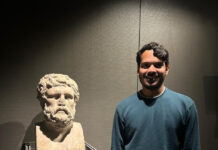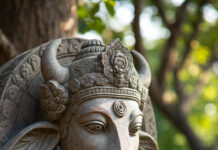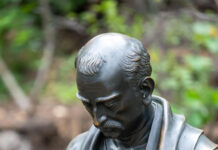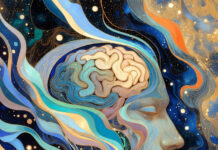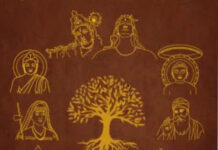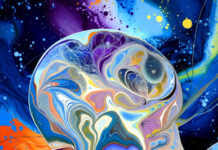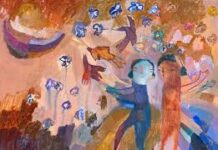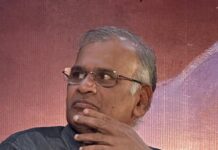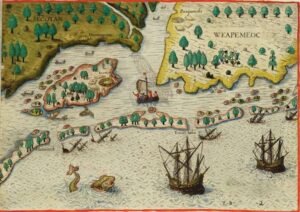
Dear Jeyamohan,
When we speak about Western culture from the perspective of our Indian tradition, it often seems to carry a tone of disdain. I feel that it is primarily emphasized as a consumerist culture. Interestingly, the same Europe that gave rise to today’s consumerist culture has also produced many profound thinkers, which seems like a paradox. The sense of elevation I experience when standing before several artistic icons of Europe does not seem fundamentally different from the spiritual upliftment I feel in India. I view them both as sources of deep inspiration for human life. I am curious to know how you perceive Western culture.
Visvesh
Dear Visvesh,
“Western culture” is a generalized term.
When we use this term in general conversations, everyone knows what it refers to. The Tamil translation of the term “Western culture” generally refers to European culture and its extension, American culture. Similarly, we refer to “Eastern culture.” It is pointed out as the counterpart or alternative to Western culture. This term is generally used to denote the collective cultures of Asia, including those of India, China, Japan, and others.
But if we look closely, we can realize that this term points to a large collective identity. The first thing is that both European culture and American culture have various internal differences. In philosophy and political perspectives, we often see trends in America that oppose European culture.
Similarly, European culture is not a singular entity. It can be viewed in many layers from various perspectives. Most notably, the Greek and Roman cultural elements, which depict the pagan culture. In contrast, the Christian culture that took root and flourished there, which is the Semitic culture. Thus, two aspects can be highlighted.
If that’s the case, what are we referring to as Western culture here?
The term came into usage during the cultural debates of the 18th century. These words emerged as a comparison when Asian cultural elements increasingly encountered European cultural elements.
In practice, this term referred to the common, dominant culture of Europe at that time. The prominent aspects of European culture during that period can be described as having two fundamental elements.
1. The overall European cultural identity that emerged during the 16th-century European Renaissance.
2. The European cultural identity that developed alongside the Industrial Revolution.
The European Renaissance was a significant upheaval in European thought. It began as Europe’s rediscovery of its Greek and Roman cultural foundations, in opposition to the dominance of Christianity.
That movement sparked a renaissance in philosophy, arts, literature, and politics. It became a significant historical event that lasted for four centuries, giving the world democracy, individual rights, and scientific thinking.
As a result of the European Renaissance, the development of empirical science in Europe led to the rise of the engineering revolution. This, in turn, sparked the Industrial Revolution, which eventually gave rise to the modern technological world.
Transportation, communication, administration, and the military grew significantly with modern technology. As a result, modern imperial governments emerged. Capitalism developed, leading to the drive for global dominance and the rise of colonialism. This, in turn, led to widespread destruction.
Thus, when we refer to Western culture, we point to both of these aspects together. Without the European Renaissance, the world as we know it today wouldn’t exist. Most of the ideas we think of today took their present form during the European Renaissance.
In every field—art, literature, and science—Europe has been the guide for the modern world. No one with modern thinking can speak while rejecting that Europe. Figures like Goethe, Tolstoy, Mozart, Beethoven, Voltaire, Marx, Darwin, and Einstein are the very faces of European culture, and they are the modern faces of the world.
The European culture that developed alongside the Industrial Revolution is entirely the face of greed, consumption and domination. This is what we know as colonialism. The wealth created by that dominance gave rise to a superficial, value-less, and entertainment-driven lifestyle in Europe.
Post-World War II, Europe aims to impose economic dominance on the world instead of direct military control. It employs all possible strategies to achieve this.
The web Europe weaves for economic dominance is twofold. The first is a political web. Its primary goal is to create political instability in the countries it seeks to dominate. To achieve this, it exports divisive political ideologies.
Through its educational institutions, publications, thinkers, and cultural advocates, Europe continuously produces ideologies based on religion, ethnicity, locality, and language that promote division. At the same time, it is working to eliminate those ideologies within its own territory to foster greater unity.
Both Europe and America export their political agendas to other countries through various forms of financial assistance. Funds for education and services are funneled to countries like India. This creates a class of mercenary thinkers and mercenary politicians. The divisive ideologies present in countries like India are intertwined with this mercenary framework and the funding they receive.
Second, there is the cultural web. Europe seeks to establish consumerism as a global culture to further its economic dominance. To achieve this, it promotes the notion that ‘entertainment is the only pleasure’ as a defining aspect of European culture worldwide. For this purpose, it employs art and literature as instruments.
Those with insight into the economic dominance of Europe and America reject Western culture on these two grounds: they refute the aggression and exploitative intent inherent in it. A prime example and fundamental starting point for this rejection is Gandhi.
However, Gandhi held the insight that this rejection did not equate to a wholesale condemnation of European culture. He embraced the best aspects of European culture. His influences and mentors were thinkers like Thoreau and Tolstoy.
To put it simply, the first Europe itself provides the strongest weapons to oppose the second Europe. It is thinkers like Marx, Tolstoy, and Thoreau who are the effective tools against European imperialism.
In today’s context, it is not an easy task for us to create this division. It requires nuanced cultural research and integrity. The European intellectual domain, nurtured by exploitative powers, presents divisive ideas under the guise of historical analysis and claims to highlight cultural diversity.
These divisive ideas are also presented under various names, such as safeguarding the rights of the oppressed, protecting minorities, and many more.
Similarly, concepts of unrestricted consumerism are presented under an idealistic mask, using terms like sexual freedom, gender equality, and individual rights. Complex theories like biopolitics and the politics of sexuality are crafted and presented in this manner. Intellectuals who speak on these topics are often created and funded for the purpose.
The second Europe exploits the respect and fascination we have for the first Europe. We respect Marx, and thus divisive ideas arrive here with a Neo-Marxist flavor. We love European modern literature, and so works promoting unrestricted indulgence are introduced as modern literature.
Those who do not understand this complexity develop criticism and hatred towards the second Europe, which ends up rejecting the first Europe as well. Broad generalizations, like “Western culture is entirely like this,” are stamped, and this is something we often observe.
Gandhi was someone who deeply understood all the exploitations of Europe. He also found the ideas to oppose it within Europe itself. He could always clearly distinguish between the two Europes. Even though Gandhi completely rejected the second form of Europe and its exploitation, he still had many European disciples and friends. All of them belonged to the first Europe.
Gandhi is the best example of how to approach Europe.
Jeyamohan
_______________
Translated by : Geethaa Senthilkumar
(Original Article)
ஐரோப்பாக்கள்


